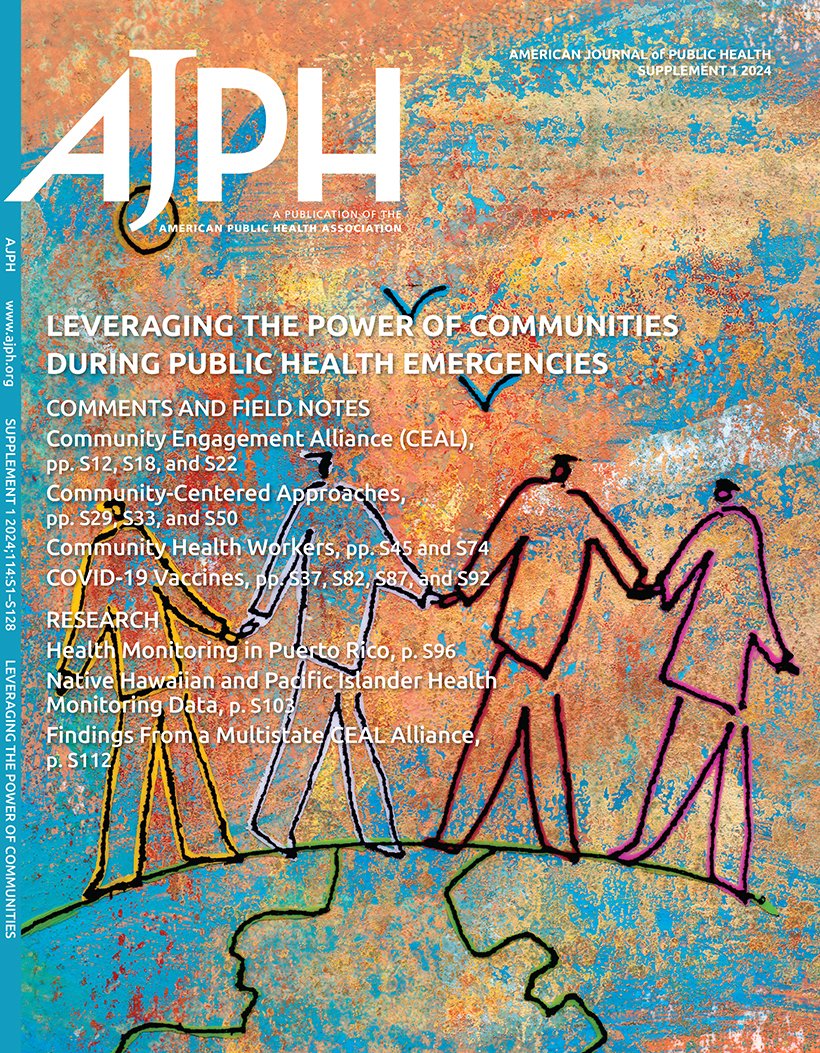Temporal Trends in Sexual Identity and Sociodemographic Disparities in Stockholm, Sweden, 2010-2021.
IF 9.6
1区 医学
Q1 PUBLIC, ENVIRONMENTAL & OCCUPATIONAL HEALTH
引用次数: 0
Abstract
Objectives. To examine temporal trends in sexual identity and sociodemographic disparities in Sweden after gender-neutral marriage legislation in 2009. Methods. We analyzed 3 cross-sectional surveys from the Stockholm Public Health Cohort (2010, 2014, 2021) that included 76 083 participants 16 years or older. Weighted Poisson regression was used to estimate associations between sexual identity and sociodemographic covariates. Survey weights and multiple imputation addressed sampling design and nonresponse. Results. Bisexual identity doubled between 2010 and 2021, from 2.1% (95% confidence interval [CI] = 1.8%, 2.4%) to 4.3% (95% CI = 3.8%, 4.7%) among females and from 1.0% (95% CI = 0.8%, 1.2%) to 1.9% (95% CI = 1.6%, 2.3%) among males. In 2021, 15.1% (95% CI = 12.5%, 17.7%) of Generation Z (1997-2012) females and 6.9% (95% CI = 5.8%, 8.0%) of Millennials (1981-1996) identified as bisexual; the figures for males were 4.2% (95% CI = 2.8%, 5.7%) and 2.4% (95% CI = 1.7%, 3.1%). Bisexual identity was associated with lower income and never-married status, although the strength of the associations decreased over time. Conclusions. The rise in bisexual identity, particularly among younger generations, likely reflects shifting societal and cultural norms. Income and marital disparities persist but have narrowed. Public Health Implications. Public health should support bisexual individuals as part of broader efforts to promote equity amid evolving norms. (Am J Public Health. Published online ahead of print September 4, 2025:e1-e10. https://doi.org/10.2105/AJPH.2025.308202).2010-2021年瑞典斯德哥尔摩性别认同和社会人口差异的时间趋势。
目标。研究2009年瑞典性别中立婚姻立法后性别认同和社会人口差异的时间趋势。方法。我们分析了斯德哥尔摩公共卫生队列(2010年、2014年和2021年)的3项横断面调查,其中包括76 083名16岁或以上的参与者。加权泊松回归用于估计性别认同与社会人口学协变量之间的关联。调查权重和多重输入解决了抽样设计和无响应问题。结果。双性恋身份在2010年至2021年间翻了一番,女性从2.1%(95%可信区间[CI] = 1.8%, 2.4%)增加到4.3% (95% CI = 3.8%, 4.7%),男性从1.0% (95% CI = 0.8%, 1.2%)增加到1.9% (95% CI = 1.6%, 2.3%)。2021年,15.1% (95% CI = 12.5%, 17.7%)的Z世代(1997-2012)女性和6.9% (95% CI = 5.8%, 8.0%)的千禧一代(1981-1996)认为自己是双性恋;男性的数据是4.2% (95% CI = 2.8%, 5.7%)和2.4% (95% CI = 1.7%, 3.1%)。双性恋身份与较低的收入和未婚状态有关,尽管这种联系的强度随着时间的推移而减弱。结论。双性恋身份的增加,尤其是在年轻一代中,可能反映了社会和文化规范的转变。收入和婚姻差距依然存在,但已经缩小。公共卫生影响。公共卫生应支持双性恋者,作为在不断演变的规范中促进公平的更广泛努力的一部分。公共卫生。2025年9月4日提前在线发布:e1-e10。https://doi.org/10.2105/AJPH.2025.308202)。
本文章由计算机程序翻译,如有差异,请以英文原文为准。
求助全文
约1分钟内获得全文
求助全文
来源期刊

American journal of public health
医学-公共卫生、环境卫生与职业卫生
CiteScore
9.50
自引率
3.90%
发文量
1109
审稿时长
2-4 weeks
期刊介绍:
The American Journal of Public Health (AJPH) is dedicated to publishing original work in research, research methods, and program evaluation within the field of public health. The journal's mission is to advance public health research, policy, practice, and education.
 求助内容:
求助内容: 应助结果提醒方式:
应助结果提醒方式:


